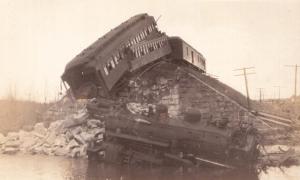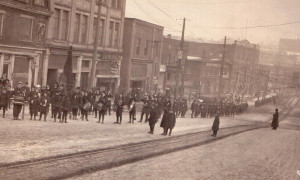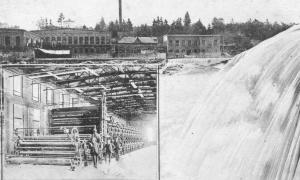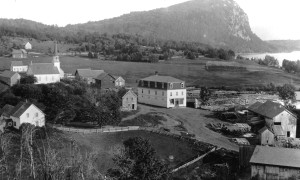Articles
--January 10, 2022.
Canadian Casino Heritage and Lingo
Canada’s casino and gambling industry has gone through a huge transformation over the years, turning into a multi-billion-dollar business. An industry that started with animal bone games thousands of years ago has transformed into lots of online casinos to choose from. As such, Canada is hailed as one of the countries where some of the earliest gambling games were conceived.
--July 31, 2019.
1) d
2) c
3) d
4) c
5) b
6) c
7) c
8) a
9) a
10) b
--July 31, 2019.
1) This photograph, c.1905, shows Main Street in which village, formally known as "the Flat"?
a) North Hatley
b) Coaticook
c) Richmond
d) Ayer's Cliff
--February 13, 2019.
1. b. Pearl ash from the hardwood forests. Beef and dairy products would later become the main agricultural goods produced in the area.
2. b. American squatters. The Abenakis had hunted the land long before but had not settled permanently. Before 1791, the land had not been parcelled out to British or French-Canadian settlers.
3. d. St. Francis River.
4. b. It would remain an empty buffer zone between the United States and Lower Canada.
5. c. Those who owned the land had no interest in settling it.
--February 12, 2019.
1. What was the very first form of agricultural produce that the early Townships colonists profited from?
a. Squash fields abandoned by members of the Abenaki nation
b. Pearl ash from the hardwood forests
c. Grains (flax, wheat, barley)
d. Beef and dairy products
2. Which group first permanently settled the Eastern Townships region?
a. Loyalists
b. American squatters
c. The Abenaki nation
d. Retired government officials
--September 6, 2018.
1) c
2) a
3) a
4) a
5) c
6) a
7) b
8) c
9) b
10) d
--September 6, 2018.
1) c
2) a
3) a
4) c
5) c
6) a
7) b
8) d
9) b
10) d
--September 6, 2018.
The nineteenth and early twentieth centuries saw a huge railway boom across the Eastern Townships. It was driven by the need to access raw materials, a desire for quick transportation, the growth of industry, and a mania to build more and more branch lines. Literally dozens of railway companies competed for territory and markets.
--September 6, 2018.
The nineteenth and early twentieth centuries saw a huge railway boom across the Eastern Townships. It was driven by the need to access raw materials, a desire for quick transportation, the growth of industry, and a mania to build more and more branch lines. Literally dozens of railway companies competed for territory and markets.
--January 19, 2018.
The nineteenth and early twentieth centuries saw a huge railway boom across the Eastern Townships. It was driven by the need to access raw materials, a desire for quick transportation, the growth of industry, and a mania to build more and more branch lines. Literally dozens of railway companies competed for territory and markets.
--December 12, 2017.
1) c
2) c
3) a
4) b
5) c
6) c
7) d
8) d
9) b
10) c
--December 12, 2017.
Before modern roads, traveling by water was often more efficient than traveling by land. Steamers of various sizes and capacities played an important role on a number of lakes in the Eastern Townships. They carried supplies and mail, and hauled logs to local sawmills. They also carried passengers -- more often than not guests at lakeside hotels, cottagers and excursionists.
--December 11, 2017.
1) b
2) b
3) a
4) d
5) b
6) c
7) b
8) b
9) a
10) c
--December 11, 2017.
As the saying goes, everyone loves a parade. Whether you're in one, or watching one from the sidelines, there's nothing quite like the sight and sound of marchers, horses, brass bands and drummers... The following quiz will test your knowledge of parades and the towns they have taken place in around the Eastern Townships over the past century and a half.
--November 29, 2017. The nominations are now open for the 2018 Marion Phelps Award and the 2018 Richard Evans Award. To view the nominating criteria or to download the forms, please click here!
Please note that the deadline to make submissions is March 31, 2018.
--November 9, 2017.
1) b
2) a
3) c
4) c
5) b
6) c
7) d
8) c
9) a
10) a
--November 9, 2017.
1) The Magog River powered several large factories in Sherbrooke. What was this one called?
a) Kayser Silk
b) The Paton Mill
c) Dominion Textile
d) None of the above
--November 9, 2017.
1) d
2) d
3) b
4) a
5) b
6) a (after Josiah Sawyer)
7) c
8) a
9) d (and the river was the Coaticook River)
10) c (after Gilbert Hyatt)
--November 9, 2017.
1) This village, located in Orford Township and home to a sawmill, was the scene of a fair amount of logging activity in the late 1800s? What was it called?
a) Saint-Élie-d'Orford
b) Deauville
c) Rock Forest
d) Cherry River
--June 1, 2017.
In the late 19th century, before there was television, movie houses or the Internet, people read. In addition to newspapers, which offered news and notice of current events, local libraries offered a selection of more timeless reading matter, mostly in the form of books.





